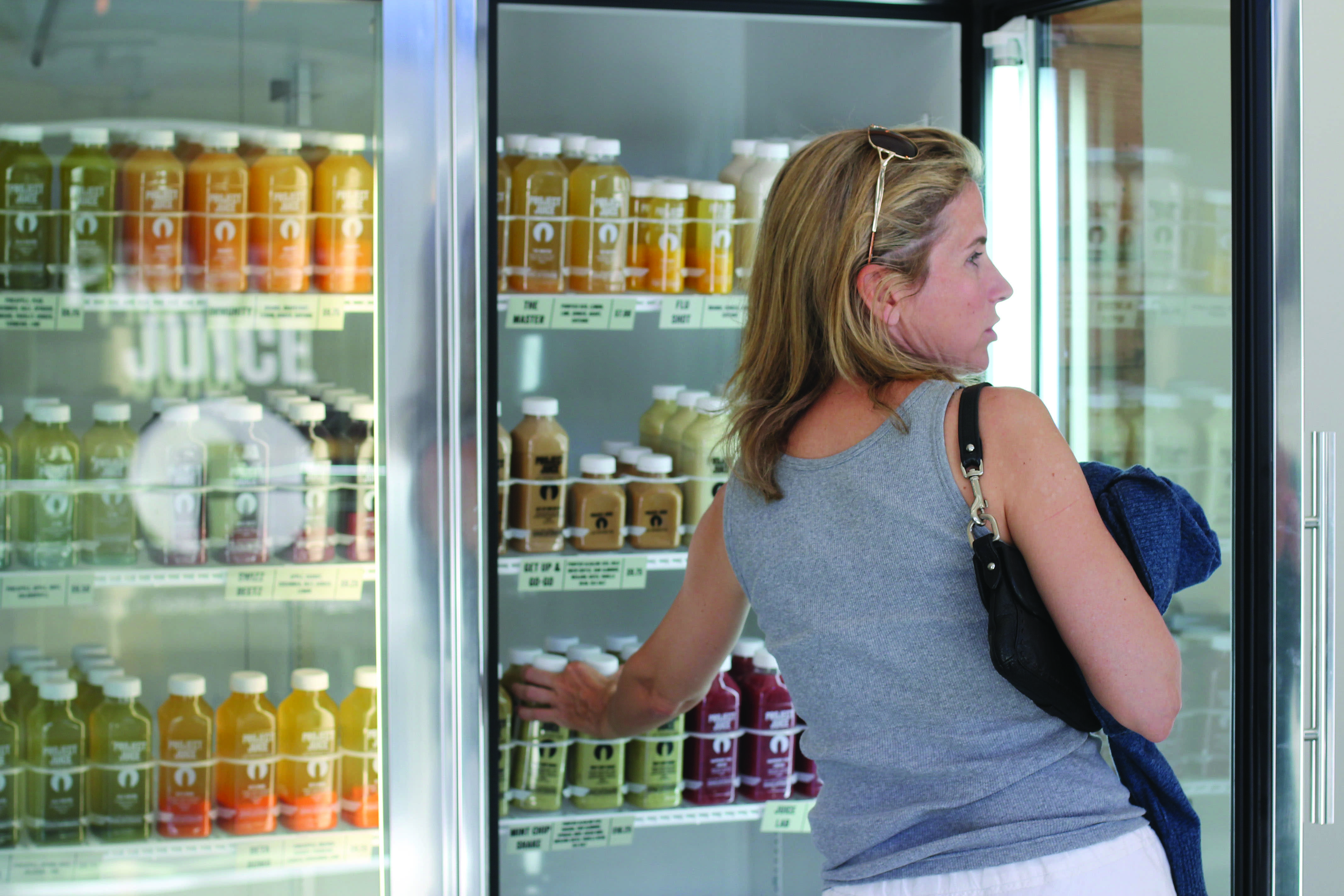Upon walking into Project Juice on High Street, customers are greeted by an assortment of colorful juices. Various red, orange and green bottles are arrayed on the shelves of the fully stocked fridge pressed against the wall.
Project Juice is one of a couple juiceries in Palo Alto, contributing to the juice cleansing trend that has been sweeping the West Coast. Rachel and George Malsin, owners of the company, opened their new Palo Alto store on April 12.
Project Juice retail manager Bryn Carmassi defines juice cleansing as drinking bottles of juice intermittently throughout the day, with only teas and water to supplement the palette.“Juicing is a trend right now, much like coffee was in the early ’90s,” Carmassi says. “People turn to juice cleansing because it allows people to get more nutrition benefits. All of our products have antioxidants and different benefits to drinking each one.”
Project Juice offers a variety of juice cleanses, from a beginner “Can You Kick It?” to an advanced “Forever Young” program, targeted at helping people reach their daily quota of fruits and vegetables.
Nutritionists do not all share the same enthusiasm over juice cleansing as the company does. Drew Parisi, a nutritionist partnered with Noxcuses Fitness in Palo Alto, says, “While there are benefits to juicing, the nutritional benefits have not been proven.”
Parisi notes that consuming large amounts of vegetables high in goitrogens (substances that interfere with iodine uptake and therefore suppress the thyroid gland) or oxalates (naturally occurring substances that are indigestible and typically absorbed by the GI tract) might result in problems such as decreased mineral absorption or thyroid problems.
The Project Juice website states that its cold-pressed juice contains soluble fiber full of vitamins, nutrients, enzymes and minerals that come from juicing, while still conserving the “rawness” of the produce, which provides more enzymes and nutrients than cooked produce.
According to Parisi, juice cleanses don’t provide enough calories, fiber, protein or fat to be sustainable, particularly if the person requires energy for athletics.
Palo Alto High School senior Josefin Kenrick experienced mixed results when she tried juice cleansing for a day with her sister.
“I felt good, light, refreshed,” Kenrick says. However, she also notes setbacks to juice cleansing. “I was working eight-hour shifts and I had to eat some legitimate food. Otherwise, I probably would have passed out.”
Instead of juice cleansing, Parisi recommends eliminating sugar, caffeine, processed grains and trans fats, while retaining whole fruits and vegetables, animal proteins and prepared grains and legumes.
Parisi acknowledges that juice cleanses vary in their impact on people.
“Some [patients] have loved it and felt great, others have felt horrible and will never do it again,” Parisi says.




